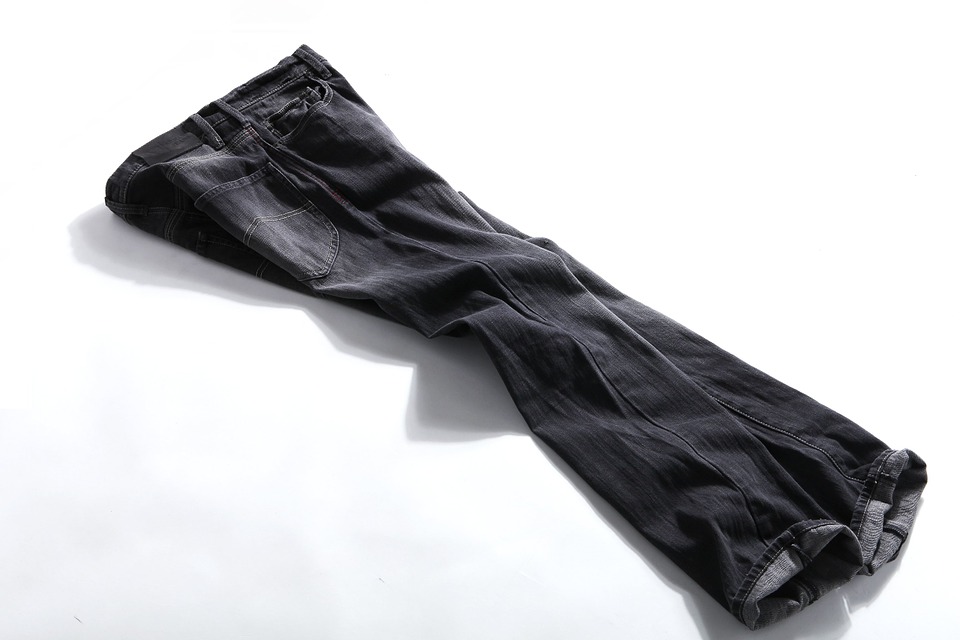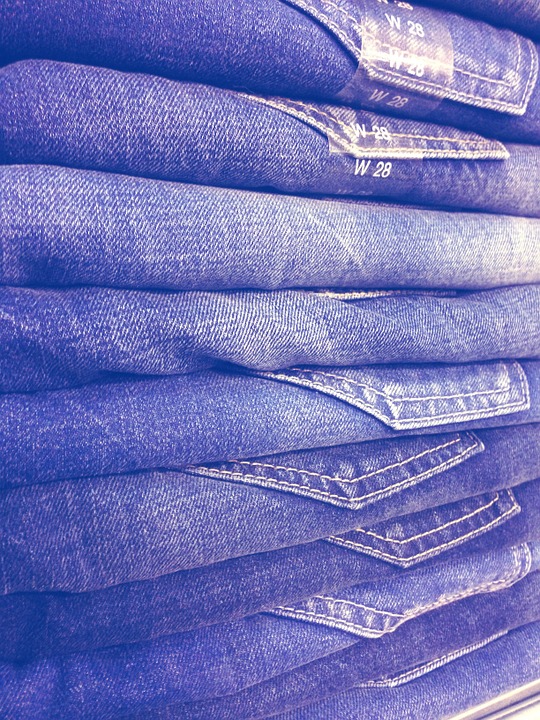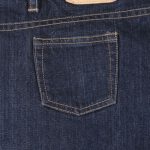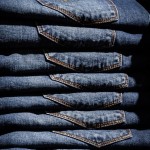The Term ‘Jeans’ Dates Back to the 18th Century
You might be surprised to learn that the term “jeans” has origins dating back to the late 1700s. According to Wikipedia, brothers Jean-Gabriel and Genoa Eynard had started a clothing company during this era. Not long after, the Swiss military had entered the brothers’ town of residence, requesting new uniforms to be cut for the troops. The brothers created these uniforms used scraps of blue cloth, which spawned the term “blue jeans.” I think it’s safe to say that the term has stuck, because several hundred years later people throughout the world continue to refer to this garment as either “jeans” or “blue jeans,” paying homage to the Eynard brothers.
Some Jeans are Pre-Shrunk
Ever notice how some jeans are smaller and tighter around the waist after being washed just once in the washing machine? This isn’t a phenomenon that’s restricted solely to jeans, as many garments suffer from this problem. Being saturated in water and then dried at high temperatures stresses the fabric, causing it to shrink. The good news, however, is that many companies now pre-shrink their jeans beforehand to protect against this phenomenon. By shrinking their jeans before they go on sale, it prevents the headache of having your jeans change size after being washed. Levi Strauss was reportedly the first company to use this manufacturing practice, doing so in 1962.
North America Leads the World for Jeans
Jeans are the single most popular and commonly worn style of pants in the world. But did you know that North America leads the market as being the largest consumer of jeans? Data reveals that 39% of the world’s purchases for jeans originate in North America; Western Europe ranks second with 20%; and Japan and South Korea rank third with 10%. The market research firm NPD Group estimates that consumers in the United States alone spend more than $15 billion annually on jeans.
Jeans Were Banned in The White House… for a While, at Least
Could you imagine living in a world in a which jeans were banned? Me neither! But that’s what happened in the White House after the inauguration of President George W. Bush. President Bush banned the wearing of jeans in the White House for six days. This restriction was later lifted, however, allowing the countless number of men and women who pass through the White House to wear the world’s most popular style of pants once more.
Bake Your Jeans in the Oven to Kill Germs
No, that’s not a typo. You can actually bake your jeans in the oven to kill bacteria, mold, mildew and other germs lingering on the surface. It was originally thought that you could disinfect jeans by washing and freezing them. This myth was soon debunked, however, and replaced with a more effective germ-killing method: baking. Experts now believe that you can disinfect germs by baking them in the oven for roughly 10 minutes at 250 degrees Fahrenheit. Even though this technique may work, it’s probably best to stick with a traditional washing machine, assuming you have access to one.
Some Jeans are Sandblasted
Ever wonder how some jeans have such an authentic worn-in/aged appearance? Denim makers have become increasingly savvy in their abilities to produce this look, often relying on sandblasting techniques. Sandblasting can be done alone, or it can be combined with stonewashing for an even greater effect. Also known as “distressed jeans,” this style of aged jeans has become a popular choice among men and women alike.
Indigo Dye is Widely Used in the Production of Jeans
It’s no secret that indigo is the single most popular color used in the production of jeans. While you can find jeans available in a wide variety of colors, ranging from indigo and light blue to black, yellow, red and even black, indigo remains the most sought-after color. But did you know that some 20 thousand tons of indigo dye are produced each year for use in jeans? With that said, only a few grams of indigo dye are used in the production of each pair of jeans.
You Can Recycle Jeans
Wait before throwing away those old pairs of jeans sitting in your closet. In addition to donating them to a charity organization, you also recycle them. Denim is ideal for recycling, as it can be broken down into scraps and used for other purposes, such as the production of new jeans. There are several companies that specialize in denim recycling. In fact, you can simply search for “denim recycle” in Google or Bing to find some of these companies. Recycling your old jeans will give you peace of mind knowing that the fabric will be put to good use.
Don’t Wash After Each Use
Contrary to popular belief, jeans should not be washed after each use. Some of the world’s leading fashion designers and icons have stressed the importance of washing jeans only when necessary, as this prolongs their lifespan while helping to protect against damage.
Stretch Jeans
There’s a relatively new type of denim jeans that’s become a hot choice among men and women alike: stretch jeans. As the name suggests, this style is characterized by a greater level of elasticity than traditional jeans. They are often produced with polyester or a similar elastic material, in conjunction with denim, to create greater elasticity. Just a small portion of polyester can give denim jeans up to 15% greater elasticity, which is pretty impressive to say the least.
Jeans Became Popular During the Gold Rush
It’s a common assumption that Levi Strauss was responsive for inventing denim jeans. In reality, though, Levi’s company simply made jeans popular in the United States. When the California Gold Rush hit, Levi opened an apparel business in which he sold clothes and other equipment to gold prospectors. Being that jeans are such a durable and versatile garment, it was the perfect choice for prospectors.












